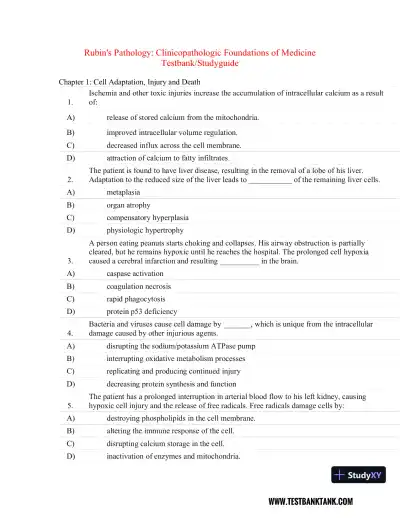Page 1

Loading page ...
Sharpen your test-taking skills with Rubin's Pathology: Clinicopathologic Foundations of Medicine Seventh Edition Test Bank, designed for maximum learning.

Loading page ...
This document has 227 pages. Sign in to access the full document!